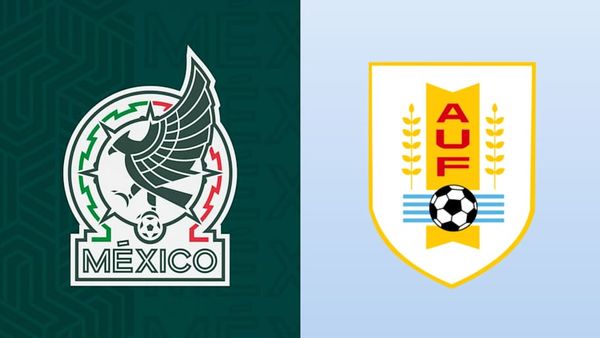
Footage of a drone exploding over the Kremlin – the centre of Russian power and the symbolic heart of the country – has triggered a wave of accusations that stretch from Moscow to Washington, igniting social media-fuelled conspiracy theories and confounding experts around the world.
Russia has accused Ukraine of carrying out a daring assassination attempt on Vladimir Putin. Ukraine has denied it had anything to do with the incident, with Volodymyr Zelenskiy saying: “We don’t attack Putin, or Moscow.”
The US has made noncommittal statements so far. Meanwhile, many experts on Russia have raised the possibility that the strike could have been a false-flag operation from Moscow.
Here’s what we know.
Ukraine’s response
President Zelenskiy has said his only concern is to defend Ukraine’s cities and villages against the Russian invasion. “We don’t attack Putin, or Moscow. We fight on our territory,” he said.
In the past, Ukraine has launched drone strikes inside Russia and Crimea, although it typically does not claim responsibility for them. A strike on the Kremlin would be its most audacious to date.
“If we presume it was a Ukrainian attack, consider it a performative strike, a demonstration of capability and a declaration of intent: ‘Don’t think Moscow is safe’,” Mark Galeotti, a Russia specialist and security analyst, wrote on Twitter.
Galeotti said characterising the strikes as an attempt on Putin’s life – as Moscow has – was “playing to Kremlin talking points”.
Putin’s spokesperson, Dmitry Peskov, said the president was not in the Kremlin at the time of the attack. Galeotti said: “He notoriously rarely goes to the Kremlin, let alone stays there overnight.”
Mick Mulroy, a former US deputy assistant secretary of defence and CIA officer, told the BBC that Ukraine tracked Putin’s movements closely, so it was likely they knew he was not in the Kremlin at the time.
The US secretary of state, Antony Blinken, has said that anything coming from the Kremlin should be taken with a “very large shaker of salt”.
A daring Ukrainian strike?
Ukraine has previously demonstrated the ability to strike deep inside Russian territory, in one instance using drones to hit a strategically important airbase near Ryazan, a city 150 miles from Moscow.
Kyiv appears to have increased its drone attacks on Russia recently, mostly focusing on targeting oil refineries. On Thursday morning alone, Russian officials reported incidents involving drones at two oil refinery facilities in southern Russia.
Ukraine’s military has indicated it was betting on drones to hit targets inside Russia.
A defence industry insider, speaking on condition of anonymity, told the Economist in March that the army was due to gain “significant and hi-tech capacity” in its drone programme in the coming weeks and months.
And while Wednesday’s strike on Moscow marked the first attack on the Russian capital since the start of the war, leaked US intelligence documents have shown that Ukraine made plans to attack Moscow on 24 February, the anniversary of the invasion. The leaked documents, part of a trove of classified information leaked on a gaming server, showed Kyiv eventually abandoned its plans after US pressure.
Ukraine typically declines to claim responsibility for attacks on Russia or Russian-annexed Crimea, though Kyiv officials have frequently celebrated such attacks with cryptic or mocking remarks.
For instance, Kyiv has vehemently denied taking part in last year’s assassination of Daria Dugina, the daughter of the political philosopher Alexander Dugin. However, US intelligence agencies believe parts of the Ukrainian government authorised the car bomb attack near Moscow that killed Dugina.
Some Ukrainian officials have put the responsibility for the attack on Russian opposition groups working inside the country. Mykhailo Podolyak, an adviser to the Ukrainian president, said: “The emergence of unidentified, unmanned aerial vehicles at energy facilities or on the Kremlin’s territory can only indicate the guerrilla activities of local resistance forces. As you know, drones can be bought at any military store.”
Ilya Ponomarev, a Kyiv-based former Russian official, told CNN he believed the attack was the work of what he called Russian partisans, not the Ukrainian military.
“It’s one of the Russian partisan groups. I cannot say more, as they have not yet publicly claimed responsibility,” he claimed.
If Kyiv or domestic opposition groups were indeed responsible for the incident, it would once again expose vulnerabilities in the heart of Russian power.
False-flag accusations
A number of experts have accused Russia of staging a false-flag event, an operation carried out with the intent of blaming an opponent for it.
The strike came at a potential turning point in the war, as Ukraine prepares to mount a long-anticipated counteroffensive. When asked why Russia would accuse Ukraine of trying to assassinate Putin, Zelenskiy said: “It’s very simple. Russia has no victories. He [Putin] can no longer motivate his society, and he can’t just send his troops to their death any more … now he needs to somehow motivate his people to go forward.”
Mulroy said: “Russia may be fabricating this to use as a pretext to target President Zelenskiy – something they have tried to in the past.”
Western analysts have said Moscow’s response in the aftermath of the strike was highly coordinated, and questioned why no reports of explosions emerged prior to the Kremlin’s official announcement, 12 hours after the explosion was said to have taken place.

The Institute for the Study of War (ISW), a US thinktank, said Russia probably staged the attack in order to emphasise the existential threat to Russia’s citizens and to prepare for wider mobilisation.
It said it was “extremely unlikely that two drones could have penetrated multiple layers of air defence and detonated or been shot down just over the heart of the Kremlin in a way that provided spectacular imagery caught nicely on camera”.
The incident also coincided with preparations for Russia’s Victory Day holiday on 9 May, which is usually marked with a military parade across Red Square next to the Kremlin. “The Kremlin may use the strike to justify either cancelling or further limiting May 9th celebrations,” the ISW said.
What could happen next?
Podolyak, the Ukrainian presidential adviser, told the BBC that attacking Moscow made no sense for Ukraine, but it would help Russia justify attacks on civilian targets.
The statement from Putin’s office pointed to a significant response. The former Russian president Dmitry Medvedev said it was time to “physically eliminate Zelenskiy and his clique”, while the parliament speaker, Vyacheslav Volodin, called for the use of “weapons capable of stopping and destroying the Kyiv terrorist regime”.
According to the ISW, influential nationalist bloggers have called on Moscow to escalate the war, while criticising the Kremlin for allowing Ukraine to cross multiple Russian “red lines” with no adequate retaliation.
However, the thinktank’s analysis also shows that bloggers with closer Kremlin affiliations have been advocating against military escalation. “This messaging from pro-Kremlin milbloggers [bloggers who cover war] could support the assessment that the purpose of this false-flag attack was to justify increased mobilisation measures rather than any sort of escalation,” the ISW said.







